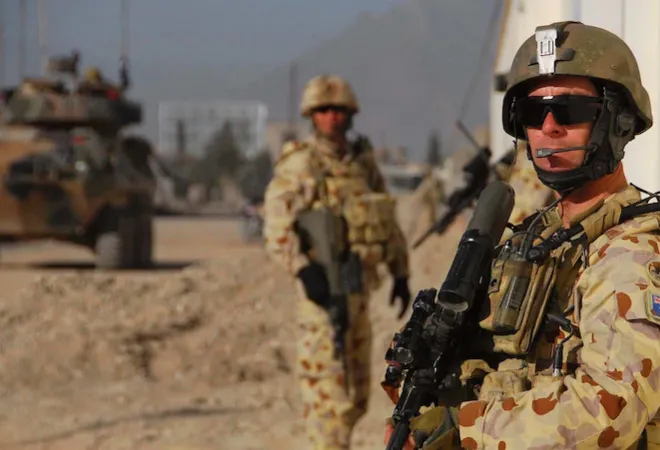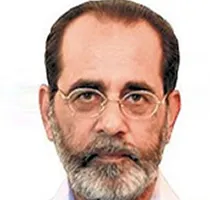As the United States races to meet the evacuation deadline of 31st August, it is clear that the images of the messy exit will stay etched in our collective conscious for a long time, just as the iconic image of US marines being evacuated from Saigon by a helicopter from a rooftop in April 1975 have never been forgotten. Already questions are being raised about the ‘sudden’ US decision, US credibility, and the collapse of the Afghan army.
A US decision to exit has been coming for a decade. In February 2011, US Secretary of State Hillary Clinton indicated a fundamental shift in US policy when she recast the earlier precondition for talks with the Taliban – “insurgents to lay down arms and renounce violence, accept the framework of the Afghan constitution, and separate from Al Qaeda” – as outcomes. This was at the height of the ‘surge’ announced by President Barack Obama that was expected to change the military situation on the ground.
UK, Germany and Norway were among the NATO members who were actively pushing this US shift as a quid pro quo for contributing to the surge. In 2007, UK had done a side deal with the Taliban in Helmand where its soldiers were deployed – that Taliban would not plant IEDs on routes patrolled by the British and in turn, the British would overlook the opium production. Then-President Hamid Karzai was upset when he learnt of it, leading to the overnight expulsion of two diplomats in December 2007, Michael Semple working with the EU delegation and Mervyn Patterson, a UN official. There were unconfirmed reports that the CIA, unhappy with British moves, had leaked the information to Karzai’s office.
By 2011, the US had begun to come around to the British viewpoint and this eventually led to the opening of the Taliban’s Doha office in 2013. Pakistan’s long game of providing sanctuary and safe havens for the Taliban was beginning to pay off. The Doha office was the first step towards gaining acceptance. During the 1990s, there were only three countries that had given recognition to the Taliban regime – Pakistan, Saudi Arabia, and UAE. This time, Pakistan wanted to ensure that the Taliban enjoyed greater acceptance before they reached Kabul.
Various dialogue processes took off. Pakistan initiated the Quadrilateral Coordination Council with the US, China, Afghanistan and Taliban. Istanbul became the venue for the Heart of Asia process. Russia entered the scene with the troika – the US and China, an extended troika, that added Pakistan and then the Moscow platform that included Afghanistan, the Taliban, and regional countries. The Taliban group in Doha was getting adept at handling media and conference diplomacy even as the US ended its combat operations by concluding Op Enduring Freedom on the 31st of December, 2014 and commenced Op Resolute Support, which restricted the US and ISAF role to ‘training, advising and assisting’ the Afghan forces as they began to take the lead in combat. This dropped the number of US troops down to 8500.
The next major breakthrough came in 2018, when the Trump administration announced the appointment of Ambassador Zalmay Khalilzad as Special Envoy for Afghanistan Reconciliation and he began direct talks with the Taliban. It was a step forward in the legitimisation process. Khalilzad began by setting out four objectives – a ceasefire, cutting links with Al Qaeda, IS and other terrorist groups, intra-Afghan peace talks and withdrawal of foreign forces, underlining that “nothing is agreed until everything is agreed”. Eventually, he dropped the conditionalities and acquiesced to the Taliban's stand – a timebound unconditional US withdrawal in return for safe passage. The other three issues were relegated to the sidelines without any timeframes. The document bore a strange title: “Agreement for Bringing Peace to Afghanistan between the Islamic Emirate of Afghanistan which is not recognised by the U.S. as a state and is known as the Taliban and the United States of America”. This rather clunky phrase was repeated more than a dozen times in the text of the Agreement, a clear indication that the days of the Islamic Republic, established after the Taliban were ousted in 2001, were numbered.
The 2020 Doha Agreement was neither Afghan-led or owned but received unanimous endorsement of the UN Security Council. In a collective suspension of disbelief, the US withdrawal deal in return for safe passage was unanimously endorsed by the United Nations Security Council as a “peace deal”. Nobody questioned the rather strange agreement that was signed between two entities that didn’t recognise each other. Further, with US help, the Taliban also enhanced their legitimacy at the expense of Kabul's government, which was pressured by the US into releasing some 5,000 Taliban insurgents in its custody.
Once President Joe Biden declared on 14th April that the US would exit before the 9/11 anniversary, the Taliban began with their military operations. An expiry date had been set. The evacuation involved 3000 US soldiers, 8000 NATO troops, and nearly 17000 private contractors. The Afghan army had been built on the US model, based on sophisticated reconnaissance units, real time intelligence using drone and aerial surveillance and monitoring, and air support. During the last six years when they had the lead in combat, they had lost over 50000 security forces compared to less than a hundred US and NATO troops killed in action, proving their fighting mettle. It is true that there was corruption and this impacted morale, but institution building takes time. However, with the withdrawal, all support systems disappeared. Ammunition replenishment to forward bases dried up as supply chains collapsed. Medical evacuation was no longer feasible. Aircraft, helicopters and drones were grounded. GPS tracking and targeting ended as proprietary software from weapon systems was removed. The soldiers had been trained to fight like an army, not as a guerrilla force, and now, they were crippled. Perhaps the most succinct explanation of the collapse was in the recent op-ed in the New York Times by a three star general of the Afghan army Samy Sabet, “We were betrayed by politics and presidents”.
What happens now in Afghanistan? The Taliban emerged as an Islamist Pashtun force in the 1990s and that remains its DNA. It has once again achieved power through military means and not through negotiations. Statements about creating an inclusive and representative government remain vague and ambiguous. To form an inclusive government requires developing Afghan nationalism over and above the Islamist Pashtunism. What does this do to its relationships with its principal benefactor, the ISI and other collaborators, the foreign militant groups like Al Qaeda, IS-K, IMU, ETIM, TTP, etc? All these remain open questions.
The US may have ended its ‘longest war’, but in Afghanistan new conflict lines are emerging.
This commentary originally appeared in ISPI.
The views expressed above belong to the author(s). ORF research and analyses now available on Telegram! Click here to access our curated content — blogs, longforms and interviews.




 PREV
PREV


